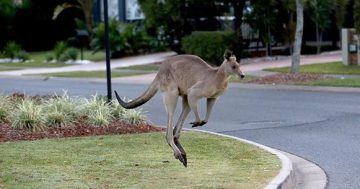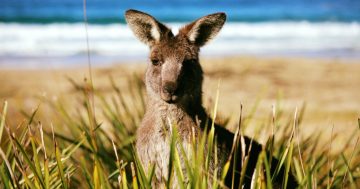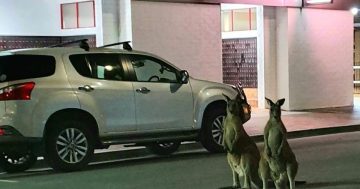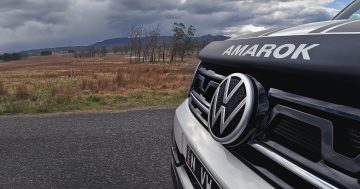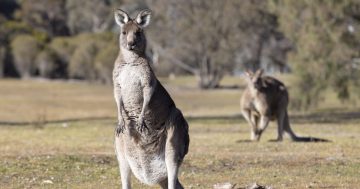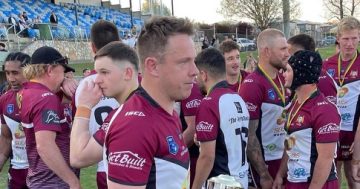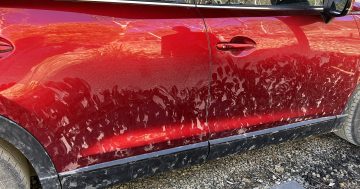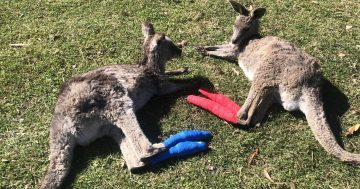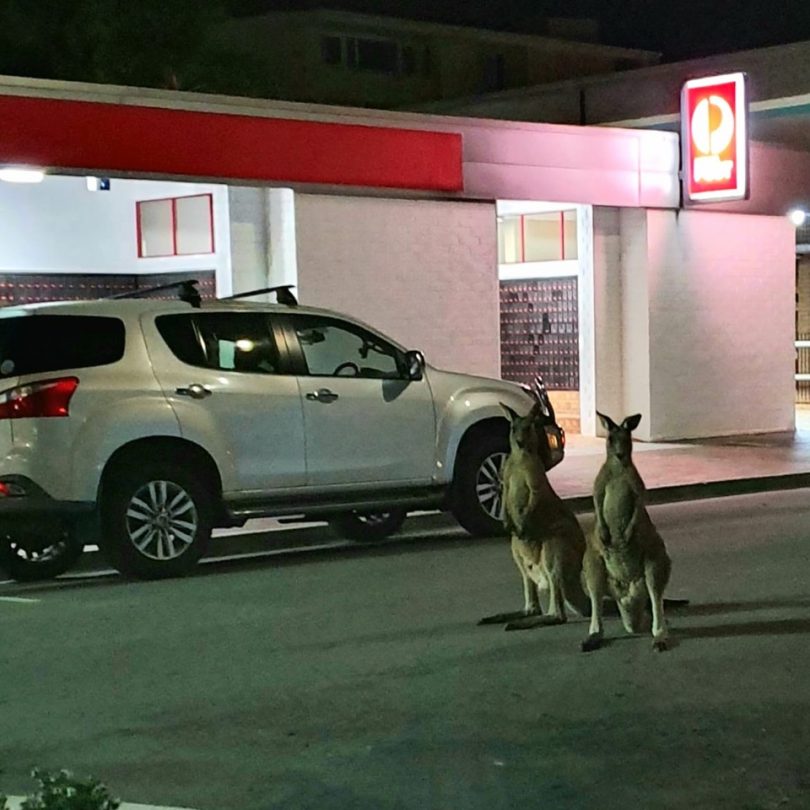
Urban kangaroos on postal patrol. Photo: About Regional.
It was, in many ways, the quintessential Canberra experience for everyone concerned. Unfortunately.
One night last week, I was driving along Adelaide Avenue between Yarralumla and an exhibition launch in Griffith at about 6:15 pm. Traffic was moderately heavy and flowing quickly, not far from the Lodge.
Parliament House was lit up, the flagpole outlined against the dark blue sky, as our lawmakers and public servants toiled to determine the course of the nation a minute’s drive away.
And then I hit a kangaroo.
It was so quick that I had no idea what was happening – a flash across the front of the car, a thud and then an animal flying through the air. Initially, I thought it was a dog. The momentum wasn’t enough to stop me and I drove on for a few seconds, in shock.
The roo had struck a glancing blow on the right-hand side of the car, knocking out the glass from the driver’s lights, smashing the grille and denting the bonnet.
I pulled over, completely flummoxed. I walked back to investigate what had happened to the kangaroo, but the traffic was moving fast. As far as I could see across three lanes of flying cars, the roo was comprehensively done for. I rang Access Canberra to report it, for the sake of both other motorists’ safety and the animal’s welfare.
The van arrived with flashing lights a few minutes later so I knew, at least, that the roo was off the road and not suffering. The car was perfectly driveable and I was expected at my next event, so after briefly wondering what to do, I carried on and got the next job done.
I remembered Brindabella MLA and fellow former radio presenter Mark Parton telling me years ago that he’d hit two kangaroos in his life and both of them were on Northbourne Avenue. This is truly the Bush Capital, I thought. I’m sure this doesn’t happen in Westminster or Washington and probably not even in Wellington.
The NRMA says that winter is the riskiest time for crashes involving animals, and 90 per cent of animal-related insurance claims arise from incidents with kangaroos. Brake, but don’t swerve if you are on a crash course with a kangaroo, as you might cause a collision with another vehicle. Dawn and dusk are the times when most animals are about, and if you see signs advising animals may be present, then slow down.
That’s all well and good, and wise advice for anyone on a country road. But in multiple lanes of peak hour traffic next to the Prime Minister’s official residence?
Well, yes. ACT Parks and Conservation says that the south-east region has some of the country’s highest recorded densities of eastern grey kangaroos. According to police, Goulburn, Yass, Canberra and Cooma are high danger zones for kangaroo collisions. Parks and Conservation’s hotspots include almost every major arterial road in the Territory.
If you do have the misfortune to hit a roo, don’t try to move it yourself. You risk being injured both by the kangaroo and by traffic. Instead, call Access Canberra immediately on 13 22 81.
Wildlife ACT, of which I’m a patron, advises that for anything smaller than kangaroos and wombats (except snakes) you can ring their hotline on 0432 300 033 for advice. In surrounding NSW, you can call Wildcare Queanbeyan on 6299 1966. You can also call the RSPCA during business hours on (02) 6287 8100.
As for me, a friend advised a medicinal tot of whisky, but I settled for a cup of strong tea. I felt a bit shaken and distressed for the poor old roo, in and out of life in one brief moment.
Was it a victim of our growing population, of dry times in the bush or of proliferating species in the city? Who knows, but I devoutly wished we were both safe, sound and undamaged.
Have you hit a kangaroo in the city?












